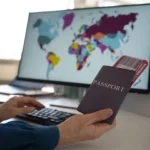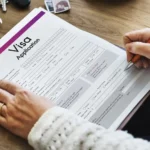Why Choose the U.S. for Higher Education?
The United States hosts over a million international students, thanks to its world-class universities, multicultural campuses, and cutting-edge research opportunities. Whether you’re aiming for Ivy Leagues, state universities, or community colleges, the U.S. offers a flexible, student-centered education system that fits diverse goals and interests.

What is an F1 Student Visa?
The F1 visa is a non-immigrant student visa that allows foreigners to pursue academic programs in the U.S. It applies to:
- Universities or colleges
- High schools and private elementary schools
- Language training programs
- Conservatories or seminaries
You must enroll full-time and prove you’re coming to study, not immigrate. It’s your gateway to the American education dream.
Picking the Right University: What to Look For
This decision affects your entire future. Look beyond just rankings. Ask yourself:
- Does this school offer your major with strong faculty?
- Is it located in a safe, affordable city?
- Are international students supported with services like housing, visa help, and tutoring?
- Is the campus culture aligned with your personality?
Tools like the College Board, QS World Rankings, and SEVP School Search can help compare options.
Application Prep: Start Early, Stay Organized
U.S. applications can be complex and time-consuming. Begin at least 12–15 months before your program starts.
Key requirements:
- Academic transcripts & GPA conversions
- TOEFL/IELTS English proficiency scores
- Standardized tests: SAT/ACT (Undergrad), GRE/GMAT (Postgrad)
- A compelling Statement of Purpose (SOP)
- 2–3 Letters of Recommendation
- Financial documents showing proof of funds
Most schools also charge an application fee, usually between $50–$100.
The F1 Visa Process: Step by Step
Once admitted, your school issues a Form I-20. Then, follow this timeline:
- Pay the SEVIS I-901 fee ($350)
- Complete the DS-160 form online
- Schedule and attend your visa interview
- Pay the visa fee ($185)
- Prepare and organize your visa documents
Pro Tip: Arrive at your interview early, dress professionally, and carry a neatly arranged file.
Nailing the F1 Visa Interview
You get just a few minutes to make a case. Be concise, calm, and truthful.
Typical questions:
- Why do you want to study in the U.S.?
- Why this specific university and course?
- How will you pay for tuition and living expenses?
- What are your plans after graduation?
Interviewers are checking your intent to return home post-study, so avoid sounding like you’re planning to stay permanently.
Life in the U.S. as an International Student
Once you land in the U.S., life shifts fast. Here’s what you’ll need to adapt to:
- Academic culture with participation, projects, and office hours
- Diverse classmates and new cultural norms
- Weather (hello, snow if you’re up north!)
- Time zones that challenge calls to family
Join student clubs, celebrate festivals with peers, and take part in international student orientations.
Budgeting & Student Jobs
Living in the U.S. is expensive. Expect monthly costs of $800–$1,500 depending on your location.
Save smart:
- Use apps like Mint or Splitwise to track spending
- Buy second-hand books or use digital versions
- Cook at home and avoid eating out often
On-campus jobs (library assistant, cafeteria, research aid) are allowed for 20 hours/week. Off-campus options (like CPT/OPT) require school and USCIS approval.
Maintaining Your F1 Visa Status
Keep your visa valid by:
- Taking the full course load (usually 12 credit hours)
- Not working off-campus without authorization
- Updating your address in SEVIS within 10 days
- Renewing your passport and I-20 on time
Failing to do so can lead to visa termination—a nightmare you want to avoid!
CPT & OPT: Gaining Real-World Work Experience
- Curricular Practical Training (CPT): Allows internships while studying; requires course credit.
- Optional Practical Training (OPT): Lets you work up to 12 months after graduation. STEM students get 24-month extension.
Many students use OPT to build U.S. work experience or get sponsored for an H-1B work visa.
After Graduation: What’s Next?
Post-degree, your options include:
- Returning home to build your career
- Applying for H-1B or other work visas
- Pursuing another degree (Master’s or PhD)
- Launching your own startup (through special visa categories)
Whatever your route, the U.S. degree opens doors worldwide thanks to its global reputation.
Common Pitfalls to Avoid
- Procrastinating on visa applications
- Giving vague answers in interviews
- Underestimating living expenses
- Violating visa work rules
- Ignoring mental health or burnout
Plan, ask for help, and take one step at a time. You’ve got this!
Pro Tips for International Students
- Make friends from outside your country—diversify your circle
- Use LinkedIn to connect with alumni from your program
- Apply early for internships—some deadlines close 6 months in advance
- Keep copies of all immigration documents, both physical and digital
- Sign up for school newsletters and career services
Conclusion
An F1 visa is more than a stamp in your passport—it’s the beginning of a life-changing journey. With the right preparation, attitude, and support, you can thrive in the U.S., build global connections, and create a bright future. Be bold, stay informed, and chase your dreams across borders.
External Links:
The Role of Credential Evaluation in the F1 Visa Journey
F-1 Visa for International Students: Requirements, Rules, Status






